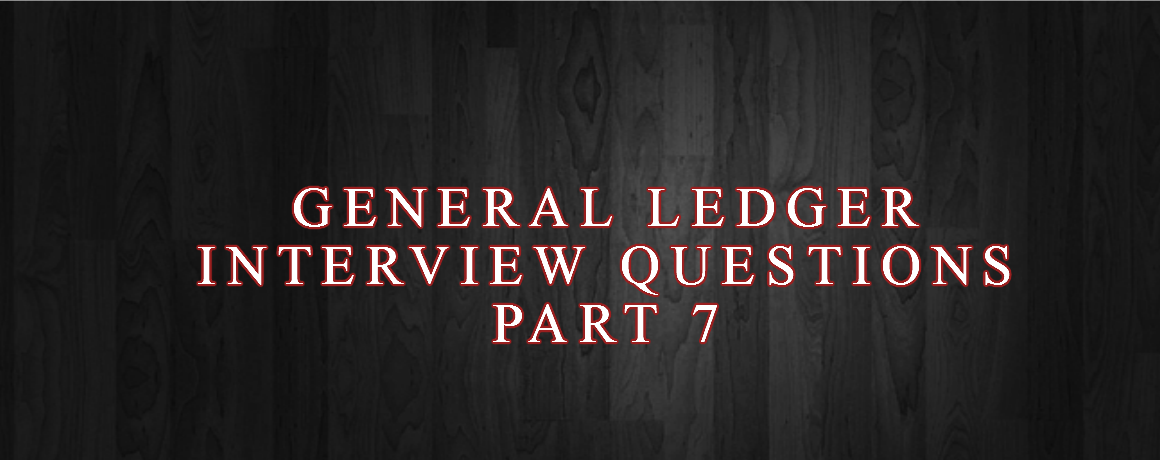General Ledger Interview Questions Part 7

1.What is journal, how many types of journal?
Journals it is used to record the business transaction it contains debit and credit lines always debit must be equal to credit. Types of journals are:
- Suspense Journal or Unbalanced Journal
- Recurring Journals
- Reversal journals
2. What is P2P Process & O2C Process
Procure To Pay(P2P) process:
Requisitions > RFQ > Quotations > Analysis > PO > Receiving > Invoices > Payment
Order To Cash(O2C) process:
Sales order > Book Order > Release the Order > Confirm the Order > Close the Order > Import Invoice > Print the Invoice > Revenue Recognition > Defer the Cost of Goods > Enter Receipt > Apply the Receipt
3.What is Translations & Revaluation and which level its working?
Translation: It is used to translate functional currency balances into foreign currency balances at the account level
Revaluation: It is used identify the unrealized gain or loss, which is occurring on the currency fluctuation.
4.What is Security Rules and Cross validation Rules?
- It is used to restrict the users from entering the segments. It will work at the Responsibility level.
- It is used to restrict the end users from entering the code combinations. It will work at Structure level
5. What is Dynamic Insertion?
Dynamic Insertion is a feature in GL in which you can dynamically create new Account Code Combinations when entering data in the Key Flexfield Segments window. The alternative method for this is, you can require all accounts to be define manually in the Accounts Combinations window.
Remember:
- Dynamic Insertion can be enabled or disabled at any time.
- You can define Cross Validation Rules to prevent incorrect account combinations from being created by dynamic insertion.
- If you are defining an Accounting Flexfield for Oracle Projects, you must define your segment with the Allow Dynamic Inserts option set to Yes.
6.Difference between Standard Accrual and Standard Cash?
- Standard Accrual
In case of Standard Accrual, Invoice and Payment Accounting will be there.
- Standard Cash
In case of Standard Cash, only Payment Accounting will be there.
7. Explain Flexfield Qualifiers in GL?
In Creating Chart Of Accounts(COA) structure we need to assign qualifiers to individual accounting key flexfield segments to identify or represent the purpose in COA.
Types of Qualifiers:
Natural Account: Each Accounting Flexfield structure must contain only one natural account segment. When setting up the values, you will indicate the type of account as Asset, Liability, Owner’s Equity, Revenue, or Expense.
Balancing Account Each structure must contain only one balancing segment. Oracle General Ledger ensures that all journals balance for each balancing segment.
Cost Center This segment is required for Oracle Assets. The cost center segment is used in many Oracle Assets reports and by Oracle Workflow to generate account numbers. In addition, Oracle Projects and Oracle Purchasing also utilize the cost center segment.
Intercompany General Ledger automatically uses the intercompany segment in the account code combination to track intercompany transactions within a single ledger. This segment has the same value set and the same values as the balancing segment.
8. What is the Differnce between Primary Ledger Vs Secondary Ledger?
Primary Ledger Vs Secondary Ledger
- Use secondary ledgers for supplementary purposes, such as consolidation, statutory reporting, or adjustments for one or more legal entities within the same accounting setup.
- This allows you to maintain both a corporate and statutory representation of the same legal entity’s transactions in parallel.
9. What is the Differnce between Reporting Currency Vs Secondary Ledger?
Reporting Currency Vs Secondary Ledger
Reporting Currencies are not the same as secondary ledgers.
Looking at the 4 C’s that define a ledger, we have a chart of accounts, calendar, accounting method, and currency.
If you only need multiple currencies to support your reporting requirements, use reporting currencies.
If you need to account for your data using different calendars, charts of accounts, accounting methods in addition to currency, use a secondary ledger.
10.What is Adjusting Period?
- Typically, the last day of the fiscal year is used as an adjusting period to perform adjusting and closing journal entries.
- Once you begin using your Accounting Calendar, you cannot change its structure to remove or add an adjusting period.
- Choosing whether to include an adjusting period or not in your calendar is a very important decision.
- You can have an unlimited number of adjusting periods.
11.What is Key flex filed how many types in GL, AP, AR, & FA?
Key Flex field is used to capture mandatory information of the organizations
Types of Key Flexfield In General Ledger:
- Accounting flex field (mandatory)
- Reporting attribute (optional)
- Gl ledger flex field (optional)
Types of Key Flexfield In Accounts Payables
- IN Accounts Payables there is No flex fields
Types of Key Flexfield In Account Receivables
- Sales Tax Location flexfield (mandatory)
- Territory Flexfield
Types of Key Flexfield In Fixed Assets
- Category (mandatory)
- Asset key (mandatory)
- Locations flex field

